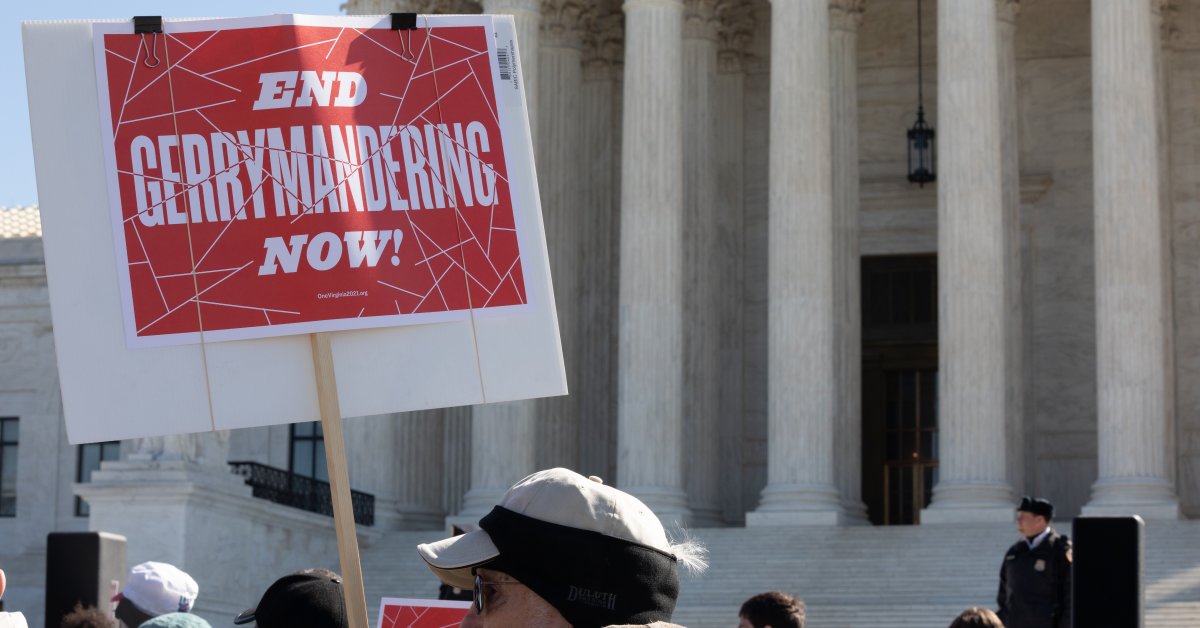Texas Republicans are poised to consider new districts in a special session after President Donald Trump called for the state to redraw its congressional map to allow for the GOP to pick up seats in the midterm elections in 2026.
Trump told reporters that there are several states in which he believes Republicans can redraw districts in order to pick up seats in Congress and keep a narrow majority.
“Texas would be the biggest one,” he said on July 16. “Just a very simple redrawing, we pick up five seats.”
Republican Texas Gov. Greg Abbott put redistricting on his special session agenda for Monday. The issue is firmly on the minds of Texas Republicans and Democrats, alike. Abbott said his decision was in light of a letter he received from the Department of Justice earlier this month. The letter alleges that four of the current districts were racial gerrymanders that violate the Constitution’s 14th Amendment, thus opening the door for redistricting as a whole to be decided.
Typically, states redraw their congressional district maps every ten years to accommodate shifts in population. But in many states, lawmakers have taken to changing the lines whenever they see it as politically advantageous to help their party gain an advantage.”
The fact that Trump and Texas Republicans are currently weighing their options of redistricting in the middle of a decade is non-traditional, but not completely unheard of. But the move has, unsurprisingly, raised concerns and discussions about gerrymandering.
Read More: To End Gerrymandering, Change How We Elect Congress
California Gov. Gavin Newsom of the Democratic Party has vowed to retaliate by redistricting his own state’s 52 seats to pick up more Democratic representation.
“Trump said he’s going to steal five Congressional seats in Texas and gerrymander his way into a 2026 win. Well, two can play that game,” Newsom said via X on July 15. “Special sessions. Special elections. Ballot initiatives. New laws. It’s all on the table when democracy is on the line.”
Beyond any potential retaliation, Republicans risk a lot in redistricting, says Jay Dow, a professor of political science at the University of Missouri.
“If you cut [the margins] too thin, you can really put your own party in danger,” Dow notes. “If you make those margins too thin and you have a bad year, you can end up losing four or five seats instead of gaining them.”
This can be referred to as a “dummymander.”
Ismar Volić, a professor at Wellesley College who has done research on how mathematics can equalize redistricting, argues that Trump’s attitude towards redistricting points to how “okay everyone is” with partisan gerrymandering.
“The courts say this is politics as usual,” he says. “Anyone who cares about some kind of fairness, representation, or competitiveness in our democracy would think it’s terrible that the President is so open about it. But it’s not illegal.”
Here is what you need to know about redistricting and gerrymandering, and the difference.
What is redistricting?
Redistricting is a process of drawing the borders of districts for which representatives are elected. As states grow, they often do not grow evenly, and thus redistricting allows for states to represent population growth and racial diversity in their cities—according to the Constitution, all districts in a state must have equal population.
“We reapportion the House seats in response to the census, and so every 10 years we do the census, and that changes the number of House seats. Some states get more, some states get fewer because of internal shifts in population,” explains Dow. “Now, the legislature will have to draw the boundaries of these districts to reflect that.”
Often, this can reflect people moving from rural areas to urban areas, or from state to state.
For example, as a result of the 2020 Census, Florida gained a seat in the House, while states including California and Illinois lost a seat.
Read More: Gerrymandering Isn’t New—But Now We Have a Solution
What is gerrymandering?
According to Richard Briffault, a professor at Columbia Law School, gerrymandering is a “pejorative” for a kind of redistricting that favors a political party, or in some cases, looks to disenfranchise a group of people.
There are two principle ways that a legislature can gerrymander for partisan purposes, says Briffault. Packing and cracking.
“With packing, you put as many of the voters of the other party into one district. Instead of the voters being equally spread around so they get an influence on a lot of places, they are in one district,” Briffault says.
Whereas with cracking, those creating maps would split a voting bloc—be that a specific party affiliation or a certain demographic—across multiple districts to dilute voting power, making it difficult for them to elect their preferred candidates.
Briffault says in a scenario where Republicans would try to use cracking in a district with a lot of Democrats, they could “carve it up into multiple districts and make [Democrats] the minority in several other districts, so that they’re dispersed and they’re never going to be the dominant force in any one district.”
There are several tells, Briffault says, that a district has been gerrymandered. But it tends to be a hard legal battle as it’s not always clear-cut. In fact, courts will often disagree on whether a district has been gerrymandered.
First, Briffault says that if the process is done entirely by one party with no input from another party, it is more likely to be gerrymandering. If it is done mid-cycle, rather than based on new population data, then that’s another warning sign. Lastly, experts recommend looking to the shape of the states. Districts drawn with “odd shapes” to capture some “small group” is also “evidence of gerrymandering,” according to Briffault.

Recognizing the difference between partisan and racial gerrymandering
Experts emphasize the difference in legality between partisan gerrymandering and racial gerrymandering.
The Supreme Court ruled in the 2019 case “Rucho v. Common Cause” that partisan gerrymandering is not subject to a federal court review, because they present non-“justiciable” political questions that lie outside of the court’s jurisdiction.
“In a handful of states, there are limits on gerrymandering, or there are special procedures for redistricting that make gerrymandering more difficult, but as a matter of federal law, the Supreme Court said it’s not unconstitutional,” Briffault says.
Volić calls this court case a “watershed” moment in redistricting. As such, people trying to detect partisan gerrymandering can “only rely on” state supreme court or state judicial systems. He argues these judicial systems are “often faulty because they have been appointed by state legislature,” the same body that is likely working on the redistricting.
In terms of racial gerrymandering, the Supreme Court has said that this can be challenged.
Dow points to the 2023 Supreme Court decision that claimed Alabama’s redistricting was not “simply a partisan gerrymander” by Republicans but actually a “racial gerrymander,” and those district lines were subject to revision.
Though Black Alabamians accounted for around 30% of the state at the time, they could only elect one of their preferred candidates in the state’s seven districts, according to the Brennan Center for Justice. When the Republican-controlled legislature failed to create a second district in which the Black population had a fair shot, a federal court created one, which eventually led to the state’s election of Democratic Rep. Shomari Figures.
Although acknowledging the difference, Volić says the line between “partisan” and “racial” gerrymandering tends to be “thin,” and in order for courts to tell states that they need to redistrict fairly, “you have to argue that the line has been crossed.”
In 2024, the Supreme Court ruled in favor of South Carolina Republicans, arguing that what a lower court said was a racial gerrymander that diluted the African American vote was, in fact, a partisan gerrymander.
Just this past week, the Florida Supreme Court, which is dominated by appointees hand-picked by the state’s Republican Gov. Ron DeSantis, upheld a congressional district map that eliminated a majority-Black district in north Florida, which DeSantis had chopped up following the 2020 census, dispersing the Black population into four different majority white districts.
Volić says the last 20 years have been “terrible for gerrymandering,” though he points to some progress, such as efforts to place redistricting in the hands of independent commissions and the role of mathematicians in recent years to create congressional maps that “rationally” create districts “detached from politics and partisanship.”
The issue is convincing legislatures to give up their power, and to do so in a timely manner, even if the courts have ruled that a district has been unfairly gerrymandered.
The judicial system is “tectonically slow moving,” Volić says, and while parties argue it at the court level, the U.S. continues to “conduct elections in these terrible maps.”
“Even if the final outcome is favorable to minorities or whoever is being disenfranchised, the damage has already been done in many ways,” Volić argues. “This is a system that’s very conducive to taking power away in a nefarious way.”








